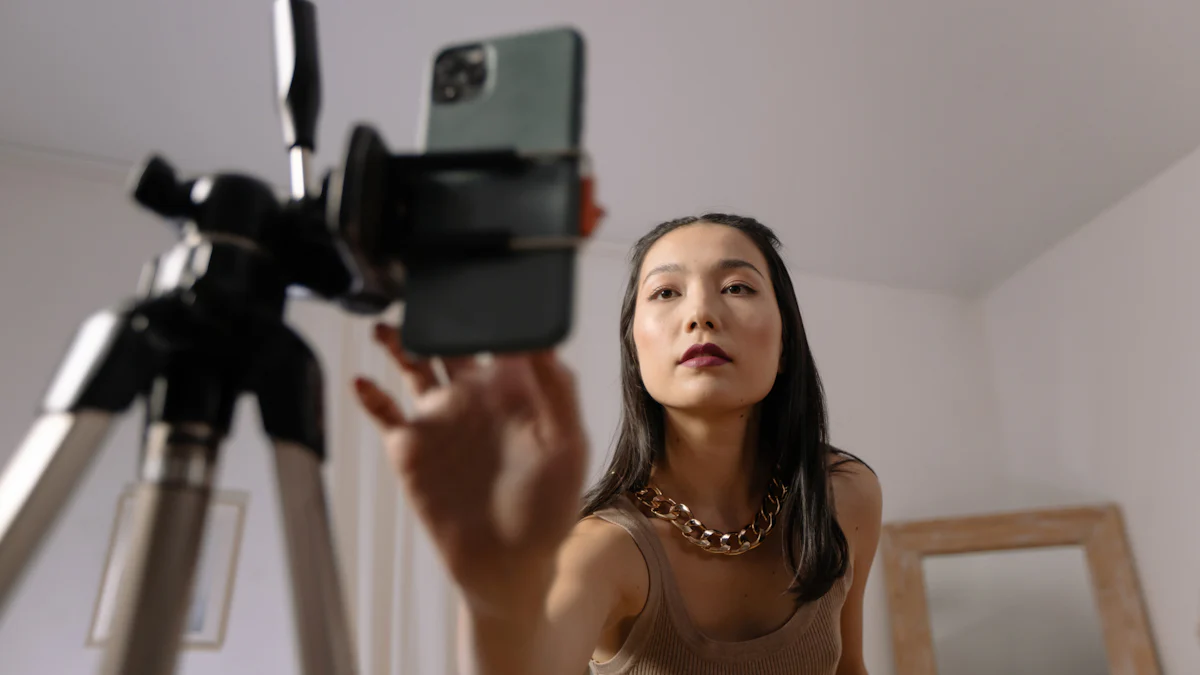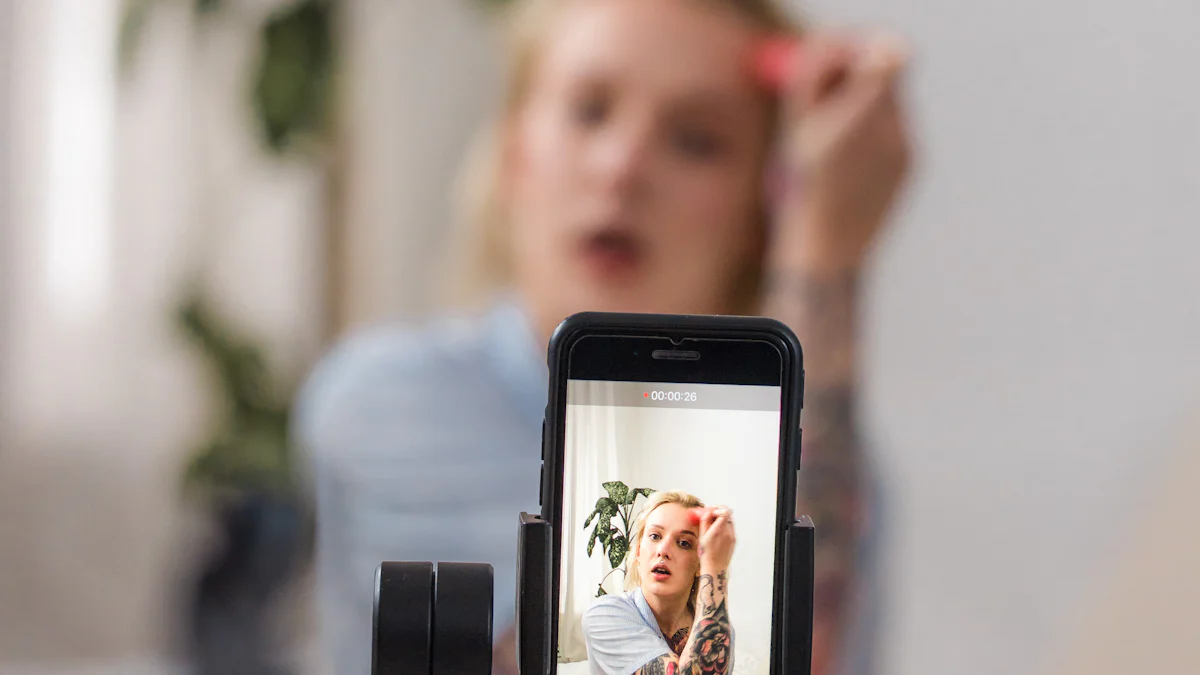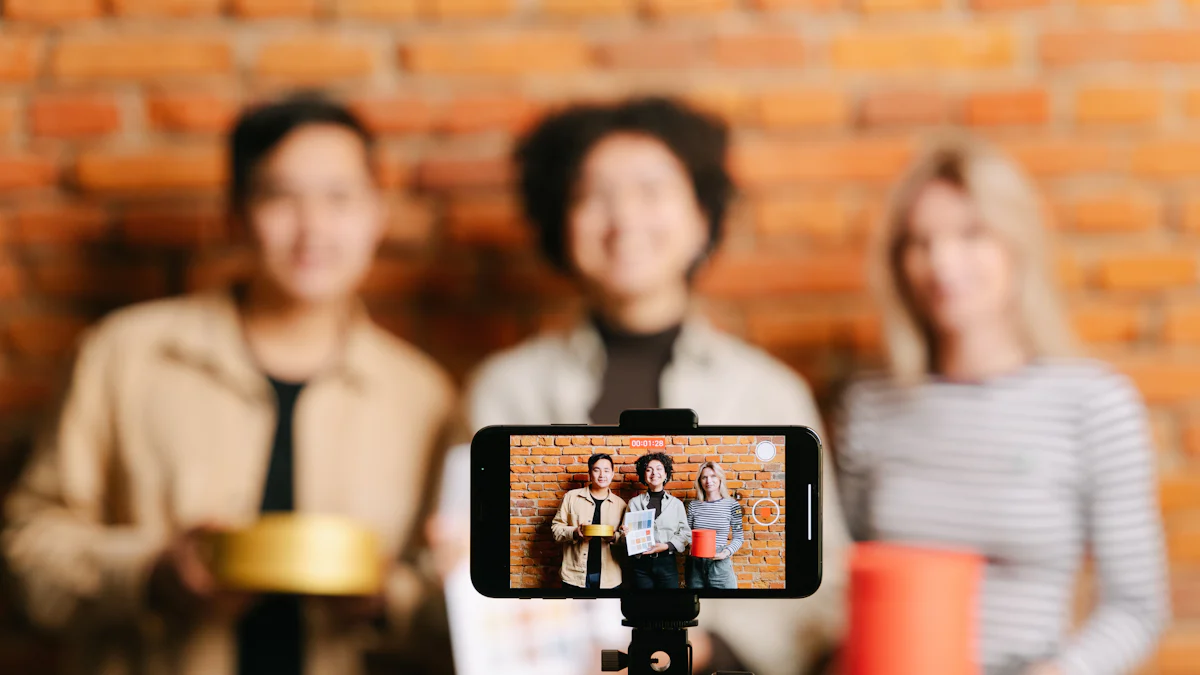The Benefits and Challenges of Influencer Marketing in 2025

Influencer marketing has become a powerhouse in the digital world, and by 2025, it’s showing no signs of slowing down. Did you know the industry grew from $1.7 billion in 2016 to a staggering $21.1 billion in 2023? Businesses are pouring more resources into this strategy because it works. On average, companies earn $6.50 for every dollar spent. But here’s the catch—success depends on understanding both the benefits and challenges. Whether it’s building trust or crafting a winning strategy influencer marketing approach, knowing the landscape can make or break your efforts.
Understanding Influencer Marketing in 2025
Definition and Evolution
Influencer marketing has come a long way over the past decade. It’s no longer just about celebrities endorsing products. Instead, it has grown into a dynamic ecosystem where authenticity and relatability take center stage. You’ve probably noticed how brands now seek influencers who genuinely connect with their audience. This shift reflects the growing demand for real voices that resonate with people like you.
To thrive in this evolving landscape, brands must stay ahead of trends. They’re not just reacting to changes—they’re embracing them. Whether it’s tapping into niche markets or creating culturally relevant content, businesses are finding new ways to engage with audiences in real time.
The Role of Influencers in Digital Marketing
In 2025, influencers play a bigger role than ever in shaping digital marketing strategies. They’re not just promoting products—they’re helping brands tell authentic stories. You’ll see companies building long-term relationships with influencers who align with their values. Why? Because trust matters.
Micro- and nano-influencers are also stepping into the spotlight. Their smaller but highly engaged audiences make them ideal for creating meaningful connections. And let’s not forget the rise of virtual influencers and the metaverse. These new trends are opening up exciting opportunities for brands to engage with you in innovative ways.
Key Trends in Influencer Marketing
Micro and Nano Influencers
Bigger isn’t always better. Micro- and nano-influencers are proving that smaller audiences can deliver higher engagement. Their followers trust them more, which makes their recommendations feel genuine. For brands, this means better results without breaking the bank.
Niche Communities and Personalization
You’ve probably noticed how much you value content that feels tailored to your interests. That’s why brands are focusing on niche communities. By partnering with influencers who cater to specific audiences, they’re creating personalized experiences that truly resonate.
AI and Data-Driven Campaigns
Artificial intelligence is changing the game. AI helps brands find the perfect influencers and optimize campaigns based on real-time data. Imagine campaigns that adapt to your preferences as they unfold. That’s the power of AI in influencer marketing.
Benefits of Influencer Marketing

Building Trust and Credibility
Why Influencers Are Trusted
Trust is the cornerstone of influencer marketing. You trust influencers because they feel authentic and relatable. Unlike traditional ads, influencer content often mirrors real-life experiences, making it easier for you to connect with their recommendations. Studies back this up. For example:
| Study | Findings |
|---|---|
| Lee et al. (2021) | Authenticity helps build trust between influencers and followers. |
| Jun and Yi (2020) | Influencer interactivity fosters long-term relationships with brands. |
| Kim and Kim (2021) | Positive attitudes toward brands are generated through influencer marketing. |
When influencers engage with their audience, they create a sense of community. This connection builds credibility, which is why you’re more likely to trust their opinions over a generic ad.
Examples of Authentic Campaigns
Some campaigns have nailed authenticity. Nike’s "Dream Crazier" campaign, for instance, featured female athletes sharing personal triumphs. It wasn’t just about selling shoes—it was about empowerment. Similarly, Canon’s "Bring It" campaign used YouTube influencers to create educational content, helping photography enthusiasts while showcasing their products. These campaigns didn’t just sell; they built relationships.
Expanding Brand Awareness
Leveraging Influencers’ Reach
Influencers have built-in audiences that trust them. When they recommend a product, their followers listen. This makes influencers a powerful tool for expanding brand awareness. Here’s how they do it:
- They introduce your brand to their loyal followers, increasing engagement.
- They help you reach different audience segments by collaborating with various influencers.
- They run giveaways that boost your brand visibility and attract new customers.
Viral Campaign Success Stories
Some influencer campaigns go beyond awareness—they go viral. Take Miro, for example. They worked with influencers to promote templates, leading to a surge in engagement and conversions. Or Fiji Water’s ‘Bodyworewhat’ campaign, which paired with Danielle Bernstein to create workout videos. These campaigns didn’t just reach people; they made a lasting impression.
Cost-Effectiveness and ROI
Budget-Friendly Strategies
Influencer marketing doesn’t have to break the bank. In fact, it’s often more affordable than traditional advertising. A typical influencer campaign might cost $5,500, while a traditional ad could set you back $35,000. That’s a huge difference, especially for small businesses.
ROI Advantages Over Traditional Advertising
The return on investment (ROI) for influencer marketing often outshines traditional methods. Why? Because it’s targeted and authentic. Influencers create content that resonates with their audience, leading to higher engagement and conversions. Compared to traditional ads, which focus on mass exposure, influencer campaigns deliver better results for less money.
| Aspect | Influencer Marketing | Traditional Advertising |
|---|---|---|
| Average Cost | $5,500 | $35,000 |
| Engagement Rates | Higher | Lower |
| Authenticity | High | Moderate |
| ROI | Higher | Lower |
When you combine affordability with high engagement, it’s clear why so many brands are adopting this strategy influencer marketing approach.
Driving Engagement and Conversions
Interactive Content Creation
Engagement is the heartbeat of influencer marketing. You’ve probably noticed how interactive content grabs your attention more than static posts. Influencers excel at creating this type of content, whether it’s polls, Q&A sessions, or live streams. These formats encourage you to participate, making you feel like part of the conversation.
For brands, this approach works wonders. Interactive content not only boosts engagement but also drives conversions. When influencers ask their followers to vote on a product feature or share their opinions, it creates a sense of involvement. This connection often leads to higher trust and, ultimately, more purchases.
To make the most of this strategy, brands need to focus on the right influencers. Here’s a simple roadmap:
- Identify influencers who align with your brand values.
- Build meaningful partnerships with them.
- Track metrics like website traffic, conversions, and social media engagement.
- Use these insights to refine your future campaigns.
By following these steps, you can create influencer content that resonates with your audience and delivers measurable results.
High-Engagement Campaign Examples
Some campaigns stand out because they go beyond just promoting a product—they create experiences. Let’s look at a few examples:
| Campaign Name | Brand | Key Features | Engagement Metrics |
|---|---|---|---|
| Absolute's Campaign | Absolut | Collaborated with planet-conscious influencers; focused on global values. | 8.6M engagements |
| Stay Curious Campaign | HISTORY Channel | Collaborated with TikTok influencers; created engaging videos for youth. | 21M accounts reached, 12.2M views, 50,000 new followers |
| BOGO Campaign | Häagen-Dazs | Local influencers; rooftop parties and sampling events for real-world appeal. | 14.3M impressions, 27,400 engagements |
| Dream Crazier | Nike | Featured female athletes; empowerment theme; shared personal stories. | Significant brand loyalty and message impact |
These campaigns highlight the power of influencer marketing to drive engagement and conversions. For instance, Nike’s "Dream Crazier" campaign didn’t just sell products. It inspired people by sharing authentic stories. Similarly, Häagen-Dazs used local influencers to create real-world connections through events.
What’s the takeaway? When you combine creativity with the right influencers, you can overcome challenges and create campaigns that leave a lasting impression. This is the essence of a successful strategy influencer marketing approach.
Challenges of Influencer Marketing

Authenticity and Trust Issues
Fake Followers and Inauthentic Content
One of the biggest challenges in influencer marketing is spotting fake followers and inauthentic content. Some influencers inflate their follower counts with bots or inactive accounts, making their reach appear larger than it really is. This can waste your budget and hurt your campaign’s effectiveness.
Transparency is another issue. Influencers must disclose sponsored content, as required by regulatory bodies like the FTC. When they don’t, it can mislead audiences and damage trust. You’ve probably seen posts where it’s unclear if the influencer genuinely loves the product or is just being paid to promote it. This lack of clarity can harm both the influencer’s and the brand’s reputation.
To avoid these pitfalls, you can:
- Analyze follower growth for sudden spikes, which may indicate fake followers.
- Check engagement rates to ensure likes and comments match the follower count.
- Use tools like HypeAuditor or Social Blade to verify audience authenticity.
Vetting Influencers for Authenticity
Finding the right influencer takes effort. You need someone who aligns with your brand and genuinely connects with their audience. Authentic influencers build trust and credibility, which benefits your brand in the long run. Look for influencers who create genuine content and have a history of engaging with their followers.
Rising Costs of Partnerships
Increasing Influencer Fees
Influencer fees have skyrocketed in 2025. Why? Several factors drive up costs:
- Platforms like Instagram demand higher fees than others.
- Influencers with high engagement rates charge more because they deliver better results.
- Campaigns requiring exclusive content or long-term involvement also cost more.
Even agency fees and usage rights for influencer-created content can add to your expenses. While these costs may seem daunting, they reflect the value influencers bring to your campaigns.
Budgeting Tips for Businesses
You don’t need to overspend to succeed. Here are some strategies to manage costs:
- Work with micro-influencers. They’re affordable and have highly engaged audiences.
- Encourage user-generated content. It’s authentic and budget-friendly.
- Build long-term partnerships. These often come with discounted rates.
- Use performance-based compensation to align influencer goals with your objectives.
- Repurpose influencer content across multiple channels to maximize its value.
Limited Control Over Messaging
Risks of Misaligned Content
When you work with influencers, you give up some control over the messaging. This can lead to off-brand content or miscommunication about your product. For example, if an influencer’s audience doesn’t align with your target market, the campaign could backfire.
Establishing Clear Guidelines
To avoid these risks, set clear guidelines from the start. Share your brand values and expectations with the influencer. Provide them with key messaging points but allow room for creativity. This balance ensures the content feels authentic while staying on-brand.
By addressing these challenges head-on, you can create a strategy influencer marketing approach that’s both effective and sustainable.
Measuring Campaign Effectiveness
Tracking ROI and Metrics
Measuring the success of your influencer marketing campaigns is essential. Without tracking the right metrics, you can’t know if your efforts are paying off. So, what should you focus on?
- Engagement Rate: This shows how often people interact with the content, like commenting, sharing, or liking.
- Reach and Impressions: These metrics tell you how many people saw the campaign and how often they interacted with it.
- Audience Demographics: Understanding the age, gender, and interests of the audience ensures your campaign reaches the right people.
- Click-Through Rate (CTR): This measures how many users clicked on links in the campaign, showing how effective the content is.
- Conversion Rate: This tracks how many users completed actions like purchases or sign-ups.
- Return on Investment (ROI): Comparing revenue to costs helps you see the financial value of your campaign.
- Sentiment Analysis: This evaluates how people feel about your campaign, helping you align with your brand’s values.
By focusing on these influencer metrics, you can identify what’s working and what needs improvement. This approach helps you overcome challenges like wasted budgets or unclear results.
Tools for Accurate Measurement
Tracking influencer metrics doesn’t have to be complicated. In 2025, you have access to advanced tools that make it easier to measure campaign performance.
- Use platforms like Google Analytics to track conversions and revenue.
- Promotional codes and user surveys can help you measure direct sales and audience feedback.
- Tools like HypeAuditor and Social Blade analyze influencer performance and audience authenticity.
- Search interest tools show how often people search for your brand after a campaign.
- Earned media tracking tools measure organic publicity from influencer campaigns.
These tools also generate detailed dashboards, showing you how your campaigns impact brand growth and engagement. They help you identify which influencers deliver the best results and how each post contributes to your goals.
By combining the right metrics with powerful tools, you can refine your strategy and maximize your ROI.
Crafting a Winning Influencer Marketing Strategy
Building Long-Term Influencer Relationships
Benefits of Ongoing Collaborations
Building long-term relationships with influencers offers several advantages for your brand. Here’s why you should consider it:
- Increased brand trust: Authentic endorsements from influencers build credibility with their audience.
- Enhanced engagement: When influencers naturally integrate your brand into their content, their followers engage more deeply.
- Improved brand loyalty: Genuine advocacy fosters loyalty among their followers, turning them into your customers.
Long-term partnerships also ensure consistency in your messaging. When influencers regularly feature your brand, their audience becomes familiar with it, boosting recognition. Plus, these collaborations save you time and money by reducing the need for frequent searches and negotiations.
Tips for Strong Partnerships
To build strong influencer relationships, focus on authenticity and mutual respect. Start by choosing influencers who align with your brand values. Communicate openly about your goals and give them creative freedom to craft content that resonates with their audience. Regular check-ins and feedback help maintain alignment and strengthen the partnership over time.
Leveraging Technology and Data
AI for Influencer Selection
AI has revolutionized how you can find the perfect influencers for your campaigns. It analyzes engagement rates, audience demographics, and even sentiment to identify influencers who align with your brand goals. By processing large datasets, AI ensures you collaborate with influencers who truly connect with your target audience. This saves time and increases the likelihood of campaign success.
Data-Driven Campaign Optimization
Data-driven strategies take your influencer marketing to the next level. Big data analytics transform social data into actionable insights, helping you refine your campaigns. For example, influencer content typically generates 150% higher engagement than branded content. By analyzing performance metrics, you can optimize your campaigns to maximize visibility, engagement, and ROI.
Prioritizing Authenticity and Transparency
Encouraging Genuine Content
Audiences value authenticity. When influencers genuinely believe in the products they promote, their recommendations feel trustworthy. Encourage influencers to share personal stories or experiences with your brand. This approach not only builds trust but also strengthens the connection between your brand and their followers.
Communicating Brand Values
Successful influencer campaigns often reflect your brand’s core values. For instance, Nike’s "Dream Crazier" campaign highlighted empowerment and perseverance through authentic storytelling. Similarly, Absolut partnered with planet-conscious influencers to emphasize sustainability, generating millions of engagements. By aligning your campaigns with your values, you create a deeper emotional connection with your audience.
Diversifying Influencer Marketing Strategies
Combining Macro, Micro, and Nano Influencers
When it comes to influencer marketing, one size doesn’t fit all. That’s why combining macro, micro, and nano influencers can make your campaigns more effective. Each influencer tier brings something unique to the table. Macro-influencers, with their massive followings, help you reach a broad audience and boost recognition. On the other hand, micro- and nano-influencers excel at connecting with niche communities. Their smaller, more engaged audiences trust their recommendations, making them perfect for targeting specific groups.
A diversified influencer portfolio increases your chances of reaching the right people. By working with influencers across different tiers, you can balance broad exposure with meaningful engagement. For example, a campaign might use a macro-influencer to introduce your brand to a large audience, while micro- and nano-influencers create personalized content that resonates with smaller, targeted groups. This approach not only enhances your campaign’s effectiveness but also improves brand visibility.
Exploring New Platforms and Formats
The social media landscape is constantly evolving, and 2025 is no exception. New platforms like BeReal, Clubhouse, and Threads (Meta’s latest offering) are gaining traction. These platforms offer fresh opportunities for influencer marketing. BeReal focuses on authenticity, Clubhouse thrives on audio-based interactions, and Threads encourages real-time conversations.
To stay ahead, you’ll need a cross-platform approach. A single collaboration can now span multiple channels, increasing your reach and engagement. For instance, an influencer might post a behind-the-scenes video on BeReal, host a live Q&A on Clubhouse, and share updates on Threads. This strategy ensures your brand connects with audiences wherever they are, keeping your campaigns dynamic and relevant.
By diversifying your influencer strategies and exploring new platforms, you can create campaigns that resonate with today’s ever-changing digital audience.
Influencer marketing in 2025 offers exciting opportunities, but it also comes with challenges. You’ve seen how it builds trust, expands brand awareness, and delivers strong ROI. At the same time, issues like rising costs, fake followers, and limited control over messaging can complicate things.
To succeed, focus on balancing authenticity, cost, and control. Use data-driven tools to select influencers who align with your brand. Build long-term partnerships to foster trust and consistency. Encourage user-generated content and explore cross-platform campaigns to maximize engagement. Don’t forget to collaborate with social media influencers who connect with your target audience.
Want actionable tips? Create brand communities to engage customers. Invest in video-centric campaigns and live streaming for authentic interactions. Allocate budgets wisely and work with micro-influencers to reach niche markets. By following these steps, you’ll craft strategies that thrive in the ever-changing digital landscape.
FAQ
What is the best way to start with influencer marketing campaigns?
Start by defining your goals. Are you looking to boost brand awareness or drive sales? Then, research influencers who align with your brand values. Use tools to analyze their audience and engagement rates. Finally, create a clear plan for collaboration.
How do you measure the success of influencer engagement?
Track metrics like engagement rates, click-through rates, and conversions. Tools like Google Analytics or HypeAuditor can help. Also, monitor audience sentiment to see how people feel about your campaign. These insights show whether your strategy is working.
Are micro-influencers better than macro-influencers?
It depends on your goals. Micro-influencers have smaller, more engaged audiences, making them great for niche markets. Macro-influencers offer broader reach but may lack personal connections with followers. A mix of both often works best.
How can you avoid fake influencers?
Check their follower growth for sudden spikes. Analyze engagement rates to ensure they match the follower count. Use tools like Social Blade to verify authenticity. Always vet influencers carefully before partnering with them.
What platforms work best for influencer marketing in 2025?
Instagram and TikTok remain top choices. Emerging platforms like BeReal and Threads are gaining traction. Choose platforms where your target audience spends time. Diversifying across multiple channels can maximize your campaign’s impact.
See Also
Key Influencer Marketing Trends You Should Follow in 2024
Benefits and Drawbacks of Influencer Marketing Returns
Excelling in TikTok Influencer Marketing Tactics for 2024
